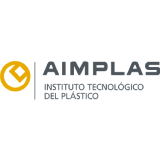What is Extended Product Responsibility (EPR)?
Extended Producer Responsibility (EPR) is an environmental policy that holds producers responsible for the entire life cycle of the products they place on the market, from design to end-of-life (including waste collection and recycling).
Under EPR, responsible companies must mitigate the environmental impact of their products throughout their entire life cycle.

RAP – what is it?
A producer takes responsibility for financing the collection, recycling and end-of-life disposal of WEEE, batteries, accumulators and packaging as well as other EPR product categories. According to the EPR regulation, a producer of products subject to EPR requirements must mitigate the environmental impacts of its products throughout their entire life cycle.
The general objectives cover:
Integration of environmental costs
Improving waste management
Reduction of disposal
Reducing the burden on municipalities
Designing environmentally friendly products
A producer’s EPR obligations are mainly regulated by the following EU Directives:
- WEEE Directive
- Batteries Directive
- Packaging Directive
In some other countries, the EPR legislation has been extended to more products and categories, e.g. in France.
Packaging and Extended Producer Responsibility
The Packaging and Packaging Waste Directive requires Member States to set up systems for the return and/or collection and reuse or recovery (including recycling) of used consumer packaging in order to meet EU recycling targets. Thus, the EU imposes a legal obligation on Member States to meet the recovery and recycling targets. However, national governments can and often do delegate this legal obligation to producers/importers through the establishment of EPR systems.
Recent legislative developments have introduced important requirements to ensure greater harmonisation and better implementation of EPR systems across the EU. While today most, but not all, Member States have EPR systems in place, the Packaging and Packaging Waste Directive obliges all Member States to establish EPR systems for packaging by 2024. The Waste Framework Directive has introduced general minimum requirements to improve harmonisation, increase transparency, cost-effectiveness, accountability and improve compliance with EPR obligations at national level. Under the new rules, ecomodulation of EPR fees has become mandatory in order to boost recyclability.

What is a producer?
A producer is defined as the party that first introduces a product subject to the EPR requirements on the market in the relevant country, e.g. Germany or France.
A producer is considered to be a producer if
- it manufactures qualifying products in the country concerned, or
- imports qualifying products into the country in question, or
- you sell qualifying products in the country concerned and your company is not based in that country.
For example, if you sell electronic toys to end-users in Germany and France from China, you are considered a producer, so you must comply with the requirements of the EPR in both Germany and France.
What do I have to do?
If you are a producer of products subject to the EPR, you are obliged to have your EPR registration numbers.
If you are a producer and do not have RAP registration numbers, you are obliged to register for them.
If you are not a producer but are a seller of RAP-regulated products you must obtain the applicable RAP numbers from your previous supplier.
If you are not a producer but are a seller of RAP-regulated products you must obtain the applicable RAP numbers from your previous supplier.
Please note that you are not allowed to sell before you have obtained RAP numbers.
Benefits of EPR for packaging and paper products
The benefits of EPR for packaging and paper products can include:
- Targeted funding, not from taxpayers, to sustainably support recovery and recycling, and disposal where necessary.
Sustainable funding to support recovery and recycling, and disposal when
needed - A more coherent and predictable system that enables
states and, possibly, regions to adopt a more unified approach to recovery and
a more unified approach to strategic planning around recycling - Increased investment in end markets and in recycling infrastructure
recycling infrastructure

What is an EPRS?
Extended Producer Responsibility Collective Systems (EPRCS) are not-for-profit organisations that collect used packaging and waste electrical and electronic equipment for recovery.
Their aim is to prevent packaging waste from going to landfill and to maximise the amount of materials recovered.
This system is based on the separate collection of packaging waste in specific containers located on public roads, so that it is the citizens, as final consumers, who initiate the return of packaging waste with the essential collaboration of the local councils.
The Management Entity is created to manage and organise the different flows: economic, responsibilities and materials.
These SCRAP entities manage the economic contributions of the companies, are authorised by the Autonomous Communities and establish collaboration agreements with local councils to develop selective collection systems and waste treatment (see the following diagram in blue for the flow of materials and in green for the economic flow).
Examples of SCRAP in Spain
For different types of waste there are different Management Bodies or Entities, among the most representative are:
Light packaging – Ecoembes
Glass packaging – Ecovidrio
Batteries and accumulators – Ecopilas
Light bulbs and fluorescent bulbs – Ambilamp
Electronic and electronic devices – OFIRAEE
Medicines – SIGRE
Tyres – Signus
In order to finance the cost of selective collection, the producing companies contribute a proportional economic amount for each waste or product introduced into the market, which varies according to weight and material.













